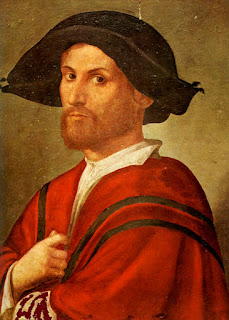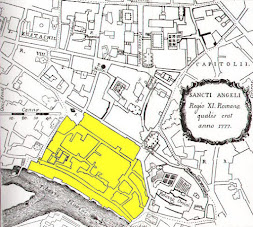NEW - Giovanni Borgia - murdered son of Pope
Killing still unsolved after 500 years despite plenty of suspects
Giovanni Borgia, the brother of Cesare and Lucrezia and son of Pope Alexander VI, was murdered on this day in 1497 in Rome. There was no shortage of possible suspects but the murder was never solved. The grief-stricken Pope launched an immediate murder inquiry, but mysteriously closed down the investigation after just one week, leading to speculation that the perpetrator could have been a member of Giovanni’s own family. The case has fascinated historians and writers for the last 500 years and been the subject of many books, including Mario Puzo’s historical novel, The Family, and it has featured in many films and televisions programmes. Giovanni was born in Rome in either 1474 or 1476 to the then Cardinal Rodrigo Borgia and his mistress, Vanozza dei Cattanei. He is thought to have been the eldest of the children fathered by Pope Alexander VI with his mistress, but this is disputed. He was married to Maria Enriquez de Luna, who had been betrothed to his older half-brother, Pedro Luis, who had died before the marriage could take place. Read more…
__________________________________
Salvatore Quasimodo - Nobel Prize winner
Civil engineer wrote poetry in his spare time
Salvatore Quasimodo, who was one of six Italians to have won a Nobel Prize in Literature, died on this day in 1968 in Naples. The former civil engineer, who was working for the Italian government in Reggio Calabria when he published his first collection of poems and won the coveted and historic Nobel Prize in 1959, suffered a cerebral haemorrhage in Amalfi, in Campania, where he had gone to preside over a poetry prize. He was taken by car to Naples but died in hospital a few hours later, at the age of 66. He had suffered a heart attack previously during a visit to the Soviet Union. The committee of the Swedish Academy, who meet to decide each year’s Nobel laureates, cited Quasimodo’s “lyrical poetics, which with ardent classicism expresses the tragic experiences of the life of our times". The formative experiences that shaped his literary life began when he was a child when his father, a station master in Modica, the small city in the province of Ragusa in Sicily, where Salvatore was born in 1901, was transferred in 1909 to Messina, to supervise the reorganisation of train services in the wake of the devastating earthquake of December 1908. Read more…
____________________________________
Giacomo Leopardi – poet and philosopher
The tragic life of a brilliant Italian writer
One of Italy’s greatest 19th century writers, Giacomo Leopardi, died on this day in 1837 in Naples. A brilliant scholar and philosopher, Leopardi led an unhappy life in Recanati in the Papal States, blighted by poor health, but he left as a legacy his superb lyric poetry. By the age of 16, Leopardi had independently mastered Greek, Latin and several modern languages and had translated many classical works. He had also written some poems, tragedies and scholarly commentaries. He had been born deformed and excessive study made his health worse. He became blind in one eye and developed a cerebrospinal condition that was to cause him problems for the rest of his life. He was forced to suspend his studies and, saddened by an apparent lack of concern from his parents, he poured out his feelings in poems such as the visionary work, Appressamento della morte - Approach of Death - written in 1816 in terza rima, in imitation of Petrarch and Dante. His frustrated love for his married cousin, and the death from consumption of the young daughter of his father’s coachman, only deepened his despair. The death of the young girl inspired perhaps his greatest lyric poem, A Silvia. Read more…
___________________________________
Battle of Marengo
Napoleon works up an appetite driving out the Austrians
Napoleon was victorious in battle against the Austrians on this day in 1800 in an area near the village of Marengo, about five kilometres south of Alessandria in Piedmont. A chicken dish named after the battle, Pollo alla Marengo, keeps the event alive by continuing to appear on restaurant menus and in cookery books. It was an important victory for Napoleon, who effectively drove the Austrians out of Italy by forcing them to retreat. Initially French forces had been overpowered by the Austrians and had been pushed back a few miles. The Austrians thought they had won and retired to Alessandria. But the French received reinforcements and launched a surprise counter-attack, forcing the Austrians to retreat and to have to subsequently sign an armistice. This sealed a political victory for Napoleon and helped him secure his grip on power. There are various stories about the origin of the chicken dish named after the battle. Some say Napoleon ate it after his victory, while others say a restaurant chef in Paris invented it and named it after the battle in Napoleon’s honour. There is also a story that Napoleon refused to eat before the battle but eventually came off the field with a ferocious hunger. Read more…


_-_ritr._A_Ferrazzi,_Recanati,_casa_Leopardi.jpg)



.jpg)

.jpg)



.jpg)

.png)
.png)


.jpg)
.jpg)
.jpg)

.jpg)
.jpg)
.jpg)
.jpg)
